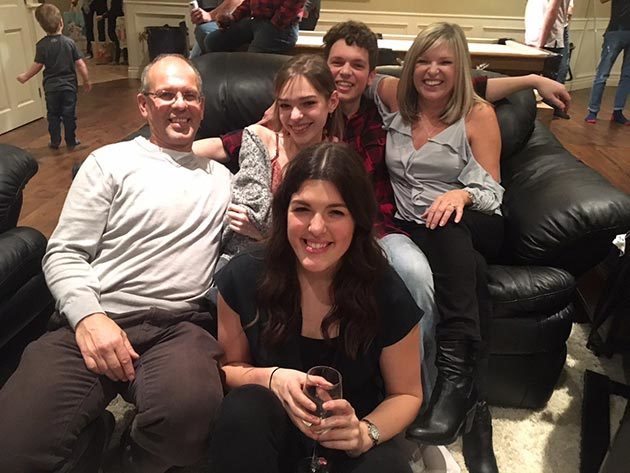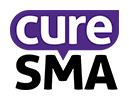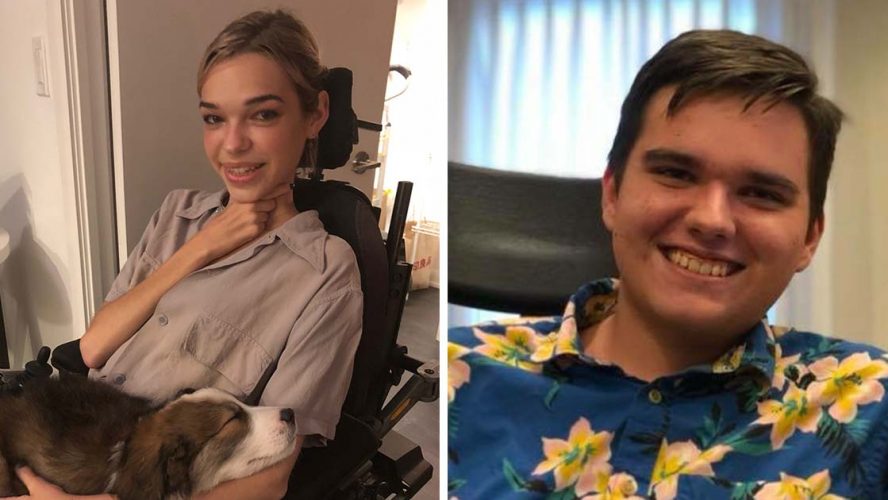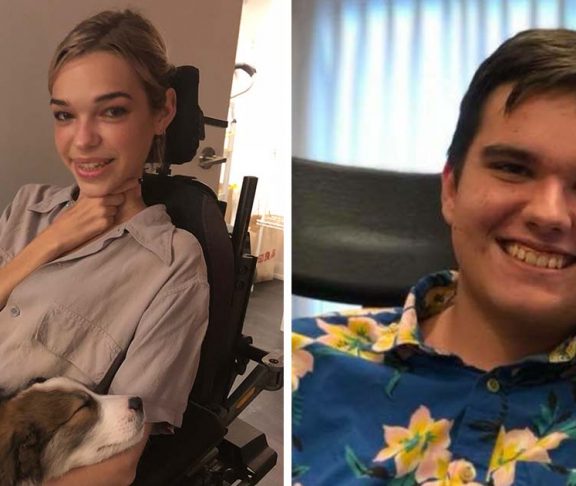Aiden White is 17-years-old and lives in Medicine Hat, AB. He likes swimming, video games, and playing boccia — a wheelchair form of Italian lawn bowling. Next year, the grade 12 student plans to study general sciences in college, and eventually go to university.
Aiden has spinal muscular atrophy (SMA), a rare and progressive neuromuscular disorder, caused by a genetic mutation that affects one in 6,000 thousand children worldwide. He was diagnosed at 21-months-old after his parents noticed something unusual in his walking. “Instead of bending his legs, he kind of waddled and didn’t do very well getting up off the floor to stand,” says Jodi White, Aiden’s mother. Genetic testing confirmed that her son had Type 3 SMA.
While SMA doesn’t affect patients’ intellectual capacity, it causes progressive physical degeneration and loss of neuro-motor function as they get older. That was Aiden’s case until October 2017, when he started a new drug treatment that halts the disease’s progression.
It’s important not just to improve our quality of life, but also because it gets harder for our families to take care of us and for us to do things as we get older.
Aiden White, 17-year-old SMA patient
New treatment improving daily functioning and independence
“Normal things like rolling over in bed were getting harder and harder for me to do,” Aiden recalls. Since starting treatment, he and his family have noticed continued daily improvement, particularly in his arm strength. “He can now do more of his own personal grooming, is learning to drive, and has more endurance for boccia,” his mother says. “He’s also gaining more independence in the kitchen with cooking and helping himself to drinks.”
As the drug makes its way through the Canadian approval process, some SMA patients can access it while others can’t. Grateful to be among the former group, the Whites want to see the drug made available to all SMA patients. “Having access has changed Aiden’s life for the better and everyone deserves that,” says Jodi. Aiden agrees, adding, “It’s important, not just for improving our quality of life but also because it gets harder for our families to take care of us and for us to do things as we get older.”
Effective treatment not accessible to all
Rebecca Van Fraassen, who has the more severe Type 2 SMA, has been trying to access the drug for over a year. The 19-year old is a second-year student at Toronto’s Ontario College of Art and Design where she’s studying drawing, painting, and animation. She hopes to study abroad in Florence, Italy for a year and later pursue a Master’s degree in New York or Los Angeles.
But right now, her life is a constant struggle. “It affects pretty much every aspect of my life, from when I wake up in the morning to when I go to bed,” she says. “Things that would take other people no time take me 10 times longer.”
Rebecca believes that having access to the drug would not only improve her day-to-day abilities but also give her hope for the future. “It’s really hard to have these aspirations and work towards something knowing your body is going to work against you,” she explains. “Every day I’m losing the ability to do things that are part of expanding my horizons, learning more, and developing, and it’s only going to get worse without the drug.”

Theresa Van Fraassen, Rebecca’s mother, echoes this sentiment. “Recent testing shows that she’s losing function and strength and this new treatment would stop the progression immediately. We’re so frustrated she can’t get access to it,” she says.
Cure SMA Canada has been supporting Canadian patients since its inception in 2000. “We have funded critical research projects and supported patients from the time of their diagnoses, through crises, and even through end-of-life and after,” explains Susi Vander Wyk, Executive Director of Cure SMA Canada, “but we have never had a more important task and worked so desperately for our patients as we are in this life-or-death battle to access the only treatment that has ever become available for SMA patients.”
Our youth are our future. As a country that prides itself on it’s commitment to equality, we need to work harder to build a health care system that truly works for all patients.
In partnership with




